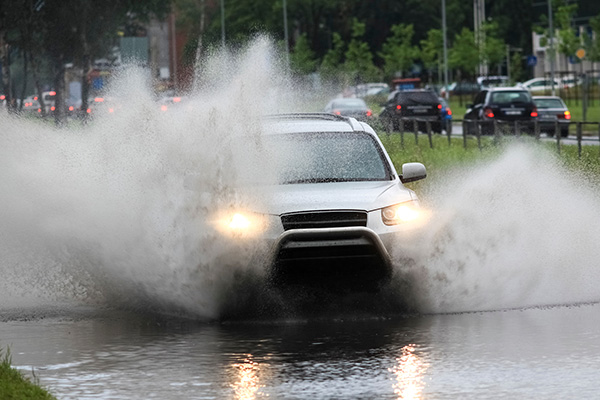
Many drivers don’t think twice about driving through puddles, especially after heavy rain. But water on the road isn’t as harmless as it seems. Even a small puddle can hide deep potholes, and larger pools of water pose serious risks to your engine, brakes, and electrical components. If you’ve ever wondered whether driving through puddles can actually damage your car, the answer is yes—it definitely can.
How Water Affects Your Engine and Air Intake
Your engine needs air to function properly, and modern vehicles have low air intakes that can easily suck in water if you’re driving through deep puddles. When water enters the intake, it can cause a condition known as hydrolock, which prevents the engine from running. Unlike air, water can’t be compressed, so when it enters the cylinders, it can cause severe internal damage, including bent connecting rods or even a completely destroyed engine.
If you drive through standing water and your car starts sputtering or stalling, turn it off immediately to avoid further damage.
Brake and Suspension Problems After Driving Through Water
Brakes rely on friction to work properly, but when they get wet, their effectiveness can be temporarily reduced. After driving through a deep puddle, you may notice that your brakes feel soft or unresponsive. This happens because water creates a thin layer between the brake pads and rotors, making it harder for them to grip.
Your suspension and tires can also take a hit. Potholes hidden under puddles can cause alignment problems, bent rims, or even tire blowouts. If your steering feels off or you hear strange noises after driving through water, have your vehicle inspected for damage.
What Happens to the Electrical System
Modern vehicles rely heavily on electronic components, from sensors to wiring and control modules. Water and electronics don’t mix, and driving through deep puddles can lead to short circuits, malfunctioning sensors, or even complete electrical failure.
If your dashboard lights start flickering or your car struggles to start after driving through a puddle, water may have entered sensitive electrical components. In some cases, this can cause long-term corrosion, leading to expensive repairs down the line.
Minimize Damage When Driving Through Water
If you must drive through a puddle, slow down. The faster you go, the more water gets sprayed into your engine bay, brakes, and electrical system. Keeping a steady speed reduces the chances of hydroplaning and prevents water from being forced into your vehicle’s air intake.
Avoid driving through water that reaches above the bottom of your doors. If you’re unsure of the depth, it’s safer to turn around or find an alternate route. Even small amounts of water can cause damage if they reach critical components.
After driving through deep water, test your brakes by lightly pressing the pedal to dry them out. If they feel weak or unresponsive, continue driving slowly while applying gentle pressure to restore their effectiveness.
Protect your vehicle from water damage. Visit B & L Automotive for expert inspections and repairs to keep your car running effortlessly in any weather!